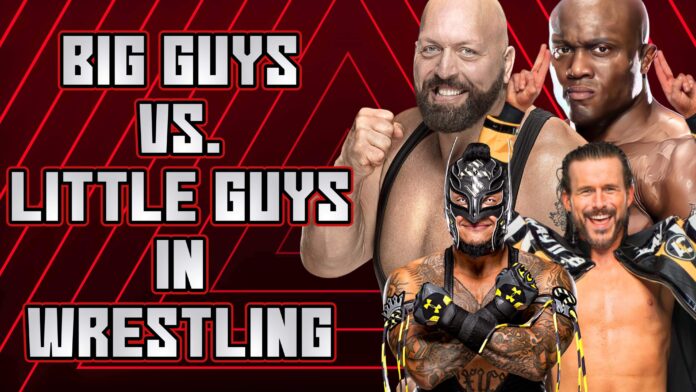In the world of professional wrestling, athletes come in all shapes and sizes, each bringing a unique style and presence to the ring. Among the various archetypes within the industry, there is a notable contrast between big guys and little guys. This essay aims to explore the differences between these two categories, shedding light on the distinct characteristics, strengths, challenges, and fan perceptions associated with each group.
1. Big Guys: Dominance in Size and Power
Big guys in wrestling are often characterized by their imposing physique, towering height, and substantial muscle mass. Their physical attributes enable them to portray strength, power, and dominance in the ring. These wrestlers typically rely on their size advantage to deliver impactful moves and overpower their opponents. Their stature helps enhance the visual spectacle aspect of wrestling, captivating audiences with their awe-inspiring presence.
2. Little Guys: Agility and Technical Mastery
Little guys, also known as cruiserweights or high-flyers, possess a smaller stature and generally lighter build compared to their larger counterparts. They excel in agility, speed, and technical maneuvers within the ring. These wrestlers often employ acrobatic moves, precision strikes, and submission holds to outmaneuver and outsmart their opponents. Their quickness and agility allow for fast-paced matches filled with high-flying and innovative wrestling techniques.
3. In-Ring Style and Match Dynamics
The distinct physical attributes of big guys and little guys contribute to the contrasting in-ring styles and match dynamics observed within professional wrestling. Big guys rely on power moves such as slams, suplexes, and brute strength to impose dominance, while little guys employ fast-paced sequences, flips, and aerial assaults to showcase their agility and versatility. Matches involving big guys often emphasize raw power and hard-hitting moves, while those featuring little guys tend to prioritize athleticism, high-energy spots, and technical prowess.
4. Fan Perception and Emotional Connection
The fan perception and emotional connection towards big guys and little guys differ significantly. Big guys often embody the classic hero or villain archetype, with their imposing presence eliciting awe and intimidation. They are often cast as dominant forces, while little guys are frequently viewed as underdogs or plucky fighters, mixing technical skill with heart and determination. Fans often rally behind little guys, cheering for their resilience and rooting for them to overcome the odds against larger opponents. Big guys, on the other hand, may elicit a mix of admiration, fear, or respect from the audience.
5. Career Opportunities and Challenges
The opportunities and challenges faced by big guys and little guys in professional wrestling can vary. Big guys may find it easier to secure contracts with major promotions due to their marketable size and aesthetics. However, they might face pressure to maintain their physical appearance and perform high-risk maneuvers that may pose a risk to their health. Little guys may encounter difficulties breaking into the industry, as their smaller frames may be perceived as a disadvantage. However, with the rise of indie wrestling and alternative promotions, the demand for diverse styles has increased, providing more opportunities for little guys to showcase their skills.
Conclusion
The dichotomy between big guys and little guys in professional wrestling highlights the diverse talents and styles that contribute to the richness of the sport. While big guys rely on their impressive size and power to dominate the ring, little guys captivate audiences with their agility, technical mastery, and underdog narratives. Each category presents its own unique strengths, challenges, and fan perceptions, contributing to the dynamic and compelling world of professional wrestling. Embracing the distinct styles and abilities of both big guys and little guys enriches the entertainment value and ensures a wide range of experiences for wrestling fans worldwide.







